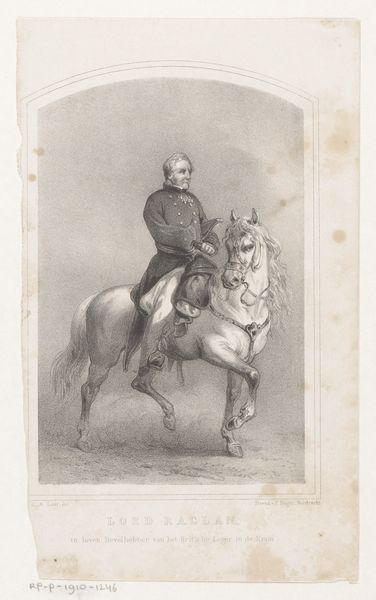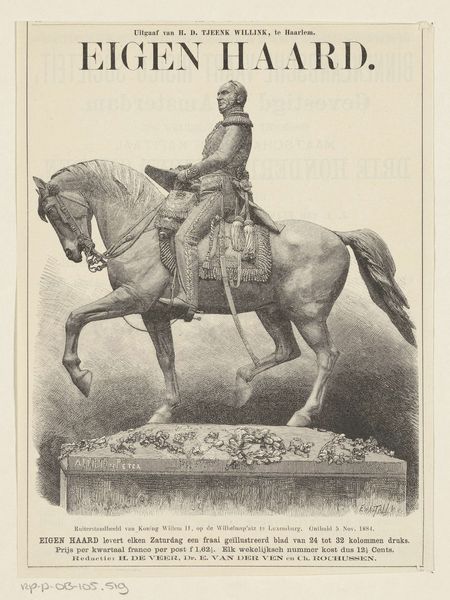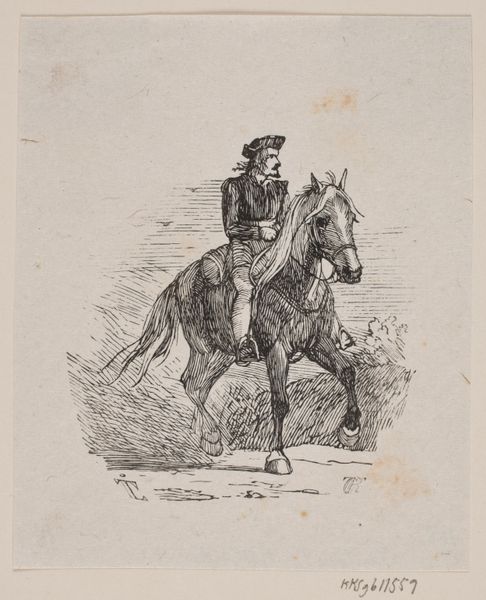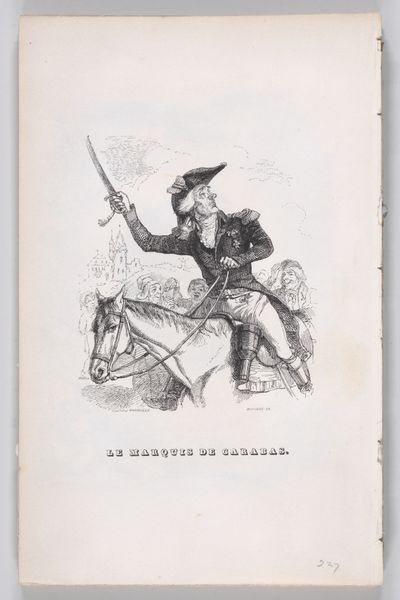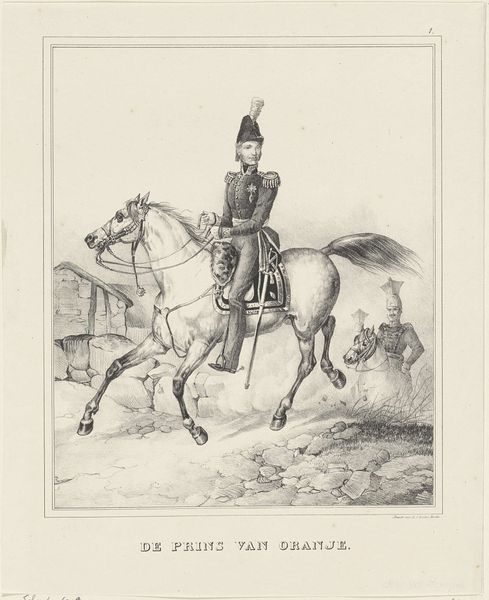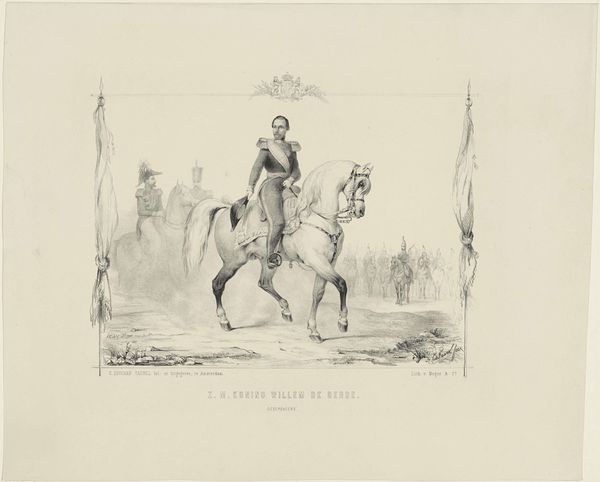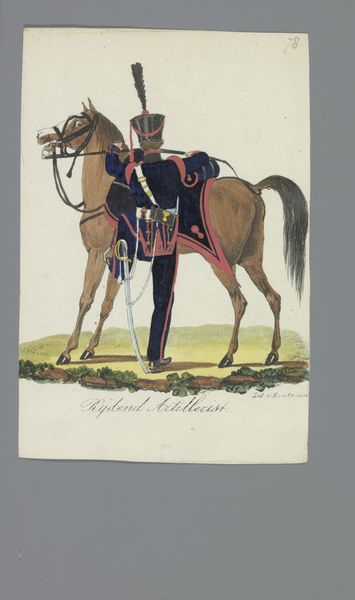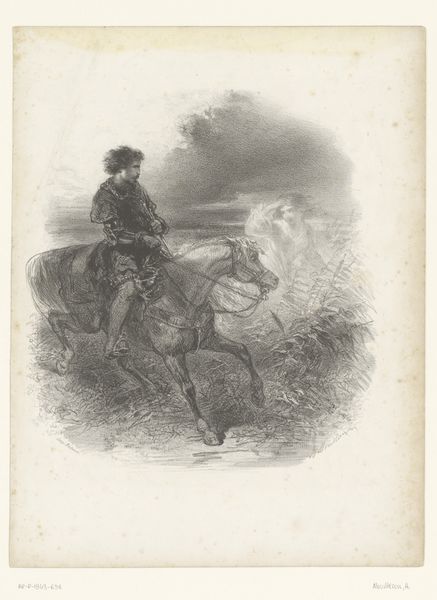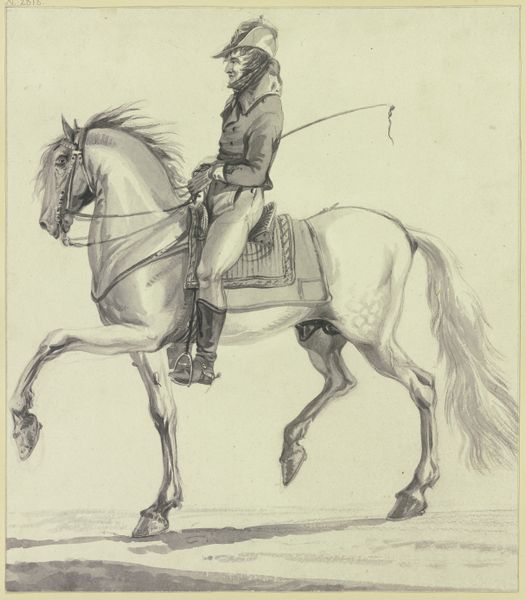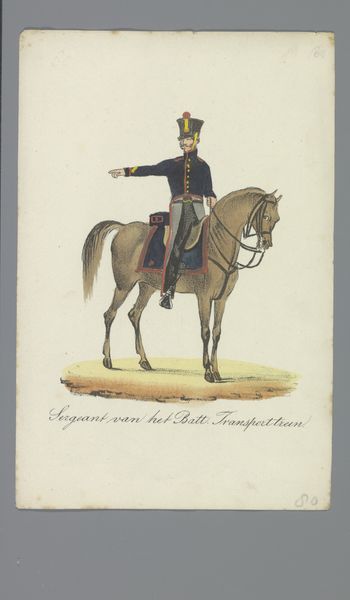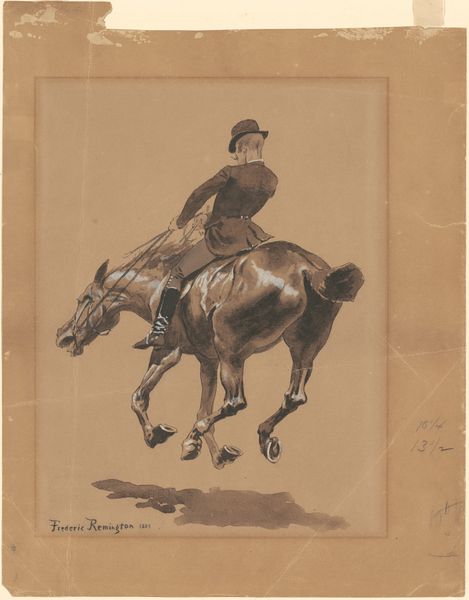
drawing, pencil, engraving
#
portrait
#
pencil drawn
#
drawing
#
pencil sketch
#
pencil
#
pencil work
#
history-painting
#
engraving
#
realism
Dimensions: height 195 mm, width 119 mm
Copyright: Rijks Museum: Open Domain
Curator: This work before us is entitled "Baron von Münchhausen te paard," or "Baron von Münchhausen on horseback." It's attributed to Charles Rochussen and thought to have been created sometime before 1843. You'll find it in the Rijksmuseum's collection. It's a drawing, utilizing pencil and engraving techniques. Editor: Immediately, I’m struck by the detail given that it's primarily pencil work. There's a real sense of texture and depth, especially in the rendering of the horse. It feels like a study in contrasts, highlighting the figure against the more subtly defined background elements. It sets a specific mood… regal, but also slightly whimsical. Curator: Whimsical is a great word for it. Münchhausen, of course, is a fictional character known for tall tales. Rochussen situates him within a very particular context, tapping into the romanticism of the era but perhaps also slyly commenting on power and performance. It is titled with flowery lettering that hints that the portrait comes directly from "Zonderlinge Reizen en Lotgevallen Van Den Vrijheer Von Munchhausen", likely a book he illustrated. Editor: Exactly! Who gets to write history, right? Münchhausen becomes this figure through the telling of his own narrative. Visually, there's a subtle suggestion here that speaks to ideas around authenticity, considering its public image. What is real, and what is fabricated? The military trappings and carefully coiffed hair seem calculated. Curator: And what kind of audience does he cultivate by carefully managing these symbols? Rochussen really prompts viewers to think about how identity is constructed and perpetuated. Consider the medium as well - engraving as a form lends itself well to distribution, and that proliferation certainly ties into how the 'real' Münchhausen legacy exists. Editor: That's a strong point about the engraving facilitating wider dissemination, essential for cementing the myth! Overall, there's an interesting tension. It seems both grand and somehow quietly critical. Curator: Precisely. Rochussen gives us both a portrait of a man and a cultural artifact, really asking what exactly each represented in the 19th century, a sentiment which applies to representations of leadership even today. Editor: This has certainly given me a lot to consider concerning the lasting cultural and visual implications tied to power, persona, and the media. Curator: Absolutely; I hope our listeners are similarly enlightened on their journey!
Comments
No comments
Be the first to comment and join the conversation on the ultimate creative platform.
